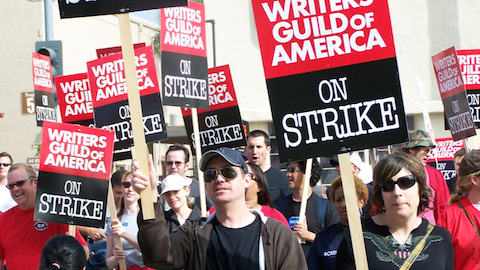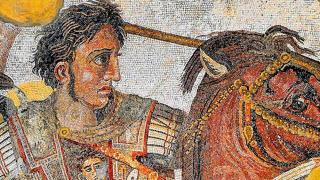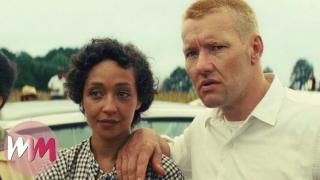Top 10 Labor Strikes in US History

Labor and management tend to get along like cats and dogs; the difference is that pets don't usually stage work stoppages. Join http://www.WatchMojo.com as we count down the top 10 labor strikes in American history. For this list, we're looking at work stoppages that have occurred over U.S. history, and have ranked them based on their numerical or historical significance.
Special thanks to our users jkellis and Sara Jason for submitting this idea through our Suggest Tool at http://www.WatchMojo.comSuggest
Top 10 Labor Strikes in US History
Top 10 Most Famous Princesses in History
Labor and management tend to get along like cats and dogs; the difference is that pets don’t usually stage work stoppages. Welcome to WatchMojo.com, and today we’re counting down the top 10 labor strikes in American history. For this list, we’re looking at work stoppages that have occurred over U.S. history, and have ranked them based on their numerical or historical significance.
#10: Great Steel Strike (1919)
Top 10 Alexander The Great Facts
During World War I, the dismal working conditions and low pay in the steel industry improved; soon after the war, however, the situation reverted to pre-war levels, prompting a strike of 350,000 workers that lasted three and a half months. Corporate leaders turned the tide of public opinion against the workers, feeding on immigration and Communist phobias of the time. The strike failed, and union power in the steel industry was eradicated for more than a decade.
#9: UPS Workers Strike (1997)
Top 10 Famous Love Letters in History
Labor was in a definite slump by 1997, so the success of the United Parcel Workers Strike was something of a surprise. The 185,000 Teamsters workers struck for 16 days in August, with one of their primary concerns being the company’s policy of hiring part-time workers so that they would not have to pay benefits. Public support was strong for the workers, resulting in UPS agreeing to the demands of the Union – and giving labor its first significant victory in many years.
#8: U.S. Postal Strike (1970)
Top 10 Crazy Things You Didn't Learn in History Class
“Neither snow nor rain nor heat nor gloom of night stays these couriers from the swift completion of their appointed rounds” – unless, of course, they want better pay. Federal employees are denied the right to strike – which is what makes the 1970 strike by U.S. postal workers important. This first strike by public employees was illegal, but 210,000 postal workers did it anyway. For two weeks in March, the postal service ground to a halt, beginning in NYC and spreading nationwide. President Nixon’s attempt to use the Army and the National Guard as letter carriers was a dismal failure, and the postal workers were granted increased wages and better conditions.
#7: Air Traffic Controllers’ Strike (1981)
Top 10 Forbidden Loves in History
A 1981 strike by these federal employees had a very different result. In August, 13,000 members of the Professional Air Traffic Controllers Organization went on strike for shorter hours and higher wages. President Reagan issued an ultimatum to PATCO: get back to work or get fired. The strikers refused; so Reagan fired 11,345 strikers in one fell swoop. Playing hardball, the government jailed many of the union leaders and waged stiflingly high fines against the Union for the illegal strike. The strike failed and was a crushing blow to the labor movement.
#6: Homestead Strike (1892)
Although the steel industry in general was fiercely opposed to labor unions, magnate Andrew Carnegie accepted their value in the workplace. However, when workers at his Homestead Steel works in Pennsylvania demanded increased wages, Carnegie sought to break the union. The strike started on June 30, but became a part of history on July 6. That’s when 300 Pinkerton agents, hired by the industry, arrived. An intense battle ensued, with both sides armed; by the time the smoke cleared, nine strikers and three agents lay dead, and the union suffered a major defeat.
#5: ILGWU Strike (1909)
Known as “the Uprising of 20,000,” the International Ladies’ Garment Workers’ Union strike lasted 14 weeks starting in 1909. Working conditions in sweatshops were truly abominable and frequently dangerous; but when 20,000 workers in New York City, most of whom were women and immigrants, went on strike, no one expected it to succeed. But with a motto of “we’d rather starve quick than starve slow,” workers finally were able to win many of their demands – including a 52-hour workweek.
#4: Great Railroad Strike (1922)
Top 10 Celebrities Who Would Make Great Drinking Buddies
An astounding 400,000 railroad shop workers went on strike on July 1, 1922, prompted by management’s plan to decrease pay by seven cents an hour. That may not sound like much today, but in 1922 it represented a 12% cut in wages. Management responded to the strike by replacing most of the workers, and violence often broke out; eleven people were killed over the months the strike lasted. A federal judge eventually issued an injunction outlawing strike activities, effectively ending the work stoppage on September 1.
#3: Textile Workers Strike (1934)
Labor Day of 1934 marked the start of a major strike by 400,000 textile workers. Lasting three weeks, the strike was largely a response to the industry’s increasing demands that fewer workers be used to produce more goods. Coming in the midst of the Great Depression, both sides in the dispute felt tremendous pressure. Mill owners responded with strikebreakers, often armed, and the strike was ultimately a failure; many strikers were killed and thousands lost their jobs.
#2: Bituminous Coal Strike (1946)
One of labor’s longest strikes lasted from April 1 to December 7, 1946. Seeking higher wages and better conditions, some 400,000 Bituminous Coal Workers heeded the call for a strike. And they were hardly alone: by the end of 1946, well over four-million Americans were involved in strike activity. The Coal Strike drew special attention from President Truman, who feared that it might stifle the post-war recovery period; and, although he fined the union heavily, the agreement he offered did address many of the workers’ concerns. Before we reveal our top pick, here are a few honorable mentions: - Writers Guild of America Strike (2007-08) - NHL Strike (1992) - New York City Transit Strike (2005) - Major League Baseball Strike (1981 & 1994-95) - Pullman Strike (1894)
#1: Steel Strike (1959)
A half-million employees walked out on the steel industry for 116 days in 1959, as the union asked for a wage increase and assurances against reductions in hours, numbers of employees and more. President Eisenhower invoked the Taft-Hartley Act to compel workers back to work; and when the union sued to have the act declared unconstitutional; it was defeated in a Supreme Court decision. The United Steel Workers of America union ultimately prevailed in obtaining a favorable contract, but the long-term effect of the four-month strike opened the door to imported steel, leading to a substantial decline in the size of the U.S. steel industry. Do you agree with our choices? What other famous American strikes deserve to be on this list? For more enthralling top 10s published daily, be sure to subscribe to WatchMojo.com.







